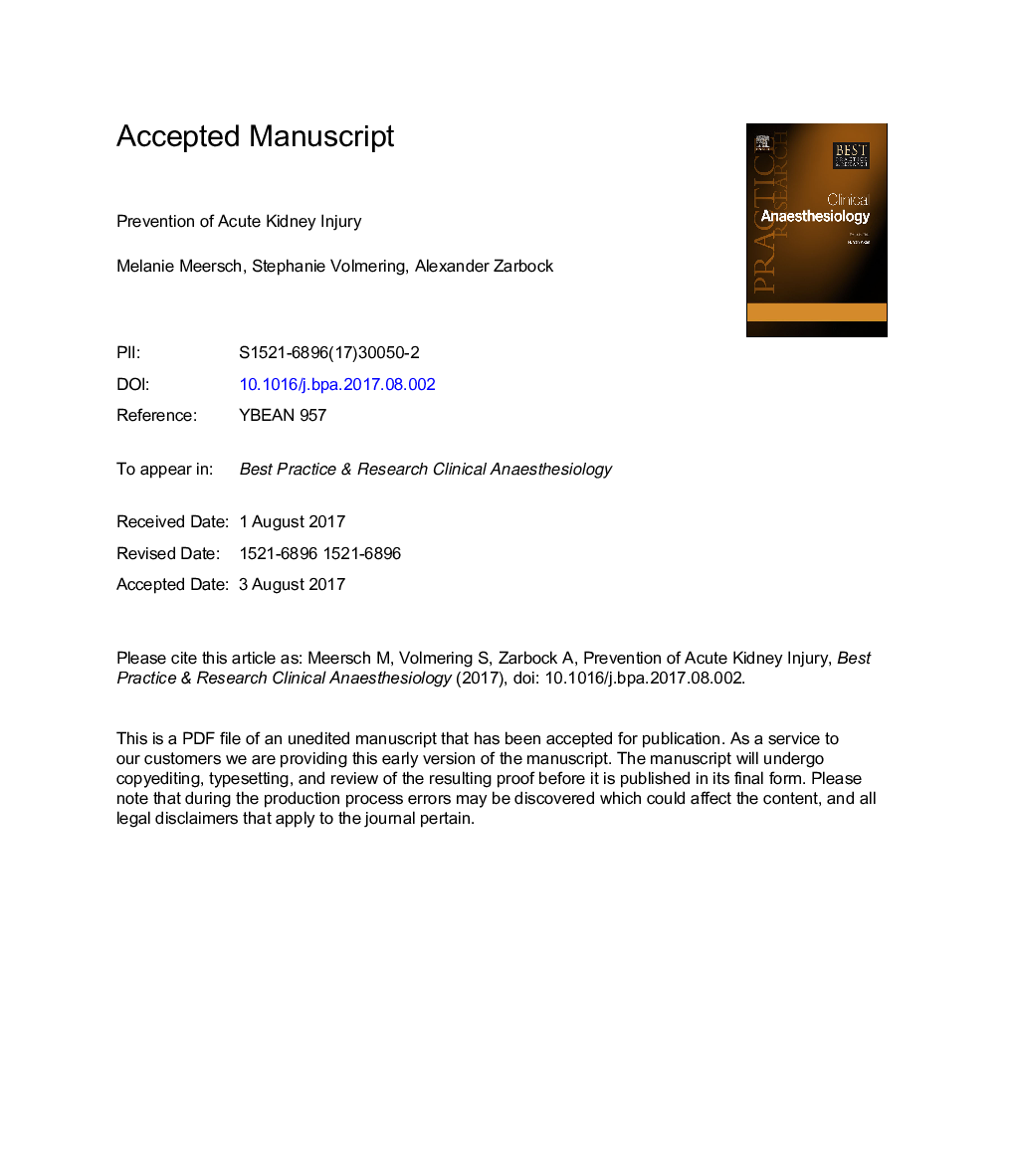| Article ID | Journal | Published Year | Pages | File Type |
|---|---|---|---|---|
| 8610901 | Best Practice & Research Clinical Anaesthesiology | 2017 | 28 Pages |
Abstract
Acute kidney injury is a prevalent but underdiagnosed complication that is associated with increased in-hospital morbidity and mortality. The importance of this complication is being increasingly recognized. The lack of timely diagnostic methods and effective preemptive and therapeutic strategies make its perioperative management challenging. To reduce the incidence of acute kidney injury, it is crucial to focus the resources on high-risk patients who can be identified by clinical scoring systems with a high predictive value and newly developed renal biomarkers. The 'Kidney Disease: Improving Global Outcomes' guidelines recommend the implementation of preventive strategies that include a bundle of supportive measures. However, clear evidence to support such an approach is lacking. Previous studies demonstrated improved patients' outcome following remote ischemic preconditioning in high-risk patients. Other studies reached an opposite result. To date, renal replacement therapy is the “gold standard” for the treatment of severe acute kidney injury, although the ideal timing, technique, and application of this therapy remain under debate.
Keywords
Related Topics
Health Sciences
Medicine and Dentistry
Anesthesiology and Pain Medicine
Authors
Melanie (Senior Anaesthetist), Stephanie (Biologist), Alexander (Director of the Department of Anaesthesiology),
